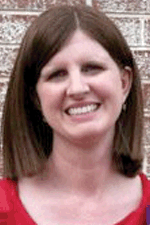The Church Involves Children in Rites and Sacraments
At the beginning of each school year I have the privilege, as the children’s pastor, of presenting Bibles to all of the children leaving children’s ministry and joining the youth group. I make a lovely speech. The youth pastor promises to train them well. We say a prayer. It really is a beautiful moment. But this school year that moment has even greater significance. This year my oldest child will be taking that step into youth group. As the children’s pastor, I will hand her a Bible and ask the youth pastor to train her well. As a mom, I will want to grab on with both hands and drag her back into children’s ministry. My daughter, on the other hand, can’t wait for that moment. She can’t wait to hold that Bible in her hands. It is a ritual that signifies a special moment in the lives of the children in our congregation. Not only will they move into the youth group, they will be given new opportunities for ministry. They are now old enough to join the middle school ministry team. This team trains with adults in the church and serves alongside them.
It is important that children identify themselves as part of the Body of Christ and the local church. Too often, they attend children’s church and youth group without becoming part of the church. When they graduate from high school and stand on the brink of adulthood, many of them drift away because they no longer have a place to belong. If we involve children in the sacraments and rites of the church, they begin to see themselves as part of the Body of Christ, not just a kid in the church.
Involvement in the rites and sacraments of the church allows children to be brought into fellowship with adults. Some events recognize the child—his rites of passage and spiritual growth steps. Through these, the child becomes known to the congregation—his name, his achievements, his gifts and strengths. Some events are times of worship, fellowship, or service. During these times the children interact with adults—they know and are known. Rites and sacraments allow children to live the Christian life in relationship with caring, Christian adults.
Most importantly, when children are involved in the rites and sacraments of the church the truths of God’s Word become reality. They observe parents, grandparents, and other members of the congregation acting on God’s Word through baptism, communion, fellowship, intercession, worship, and service. God’s Word is not just taught; it is modeled by adults within the Christian community.
Jesus placed high value on children, and He always wanted them to be included in His ministry. When the disciples tried to send them away, Jesus drew the children to himself and blessed them. When the children were too loud in their praise, Jesus reminded us that “from the lips of children and infants you, Lord, have called forth your praise.” (Matthew 21:15, 16) As congregations, we have the opportunity to follow Jesus’ example of including children in all aspects of congregational life, including rites and sacraments.
What rites and sacraments help our children identify with their church? There are sacraments such as baptism and communion that allow children and adults to obey God’s Word in fellowship with one another. It is an amazingly sacred moment to watch both adults and children share their testimonies and their love of Christ through baptism. When we take communion side by side, we realize that Christ died for us all, children and adults.
However, the church can go beyond these events and intentionally involve children in congregational celebrations and rites throughout the year. What are some events that could be included in the church calendar for the purpose of involving children in the life of the local church? Consider the child’s rites of passage—child dedication, presentation of Bible, promotion to another ministry or class, back to school, and the end of the school year. Consider the events of the local church—holiday activities, corporate intercession, mission projects, and serving needy individuals in the church and community.
Participating in the rites and sacraments of the local church draws us together as believers in Christ. As the children of my church grow, I want them to look forward to the rites and sacraments of our church. I want them to know that they belong to this church, not just as children or youth, but as fellow Christians living this life together. So even though I want to hold my daughter back, I will let her go. She has looked forward to this rite of passage most of her life. She is a part of this congregation. They will pray for her and walk with her as she matures as a Christian. Now, someone just needs to pray for her mom!
Five Ways You Can Make Every Rite and Sacrament Memorable to Children
Participatory. If you want children to be involved, don’t talk, talk, talk and expect children to listen, listen, listen. Give them something to do with their hands and their feet. Give them something to see with their eyes. Give them something to say with their mouths. And give them something to think about with their minds.
Biblical. Lay a good biblical foundation for the rites and sacraments children are involved in. Keep the Bible truths simple and easy to understand. Share Bible stories of children involved in a similar rite or sacrament. For example, the boy who shared his lunch so many could be fed lays a great biblical foundation for children being involved in a missions or service project.
Creative. While tradition has value to children, don’t let any tradition become stale. Look for creative ways to have times of intercession, worship, fellowship, rites of passage, holiday celebrations, and the sacraments.
Excellent. The rites and sacraments of the Christian life are amazing times of fellowship, worship, service, and obedience. Don’t allow them to be mediocre. Plan, prepare, practice, and present with excellence.
Consistent. Rites and sacraments become traditions that are meaningful to children because they are done consistently. Consistency creates expectation. “This rite of passage will happen again and when I am old enough or ready, I will be part of it.”
—Melissa Minter


